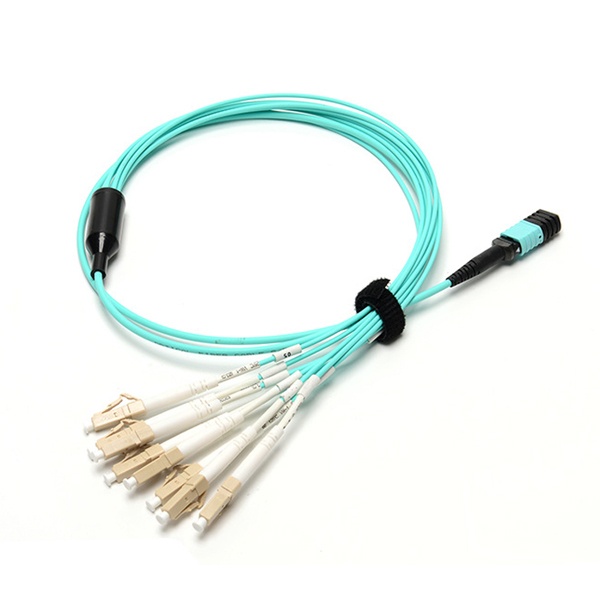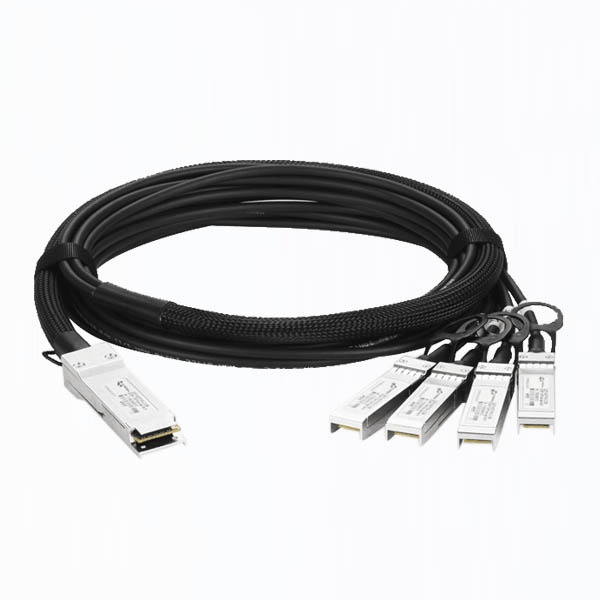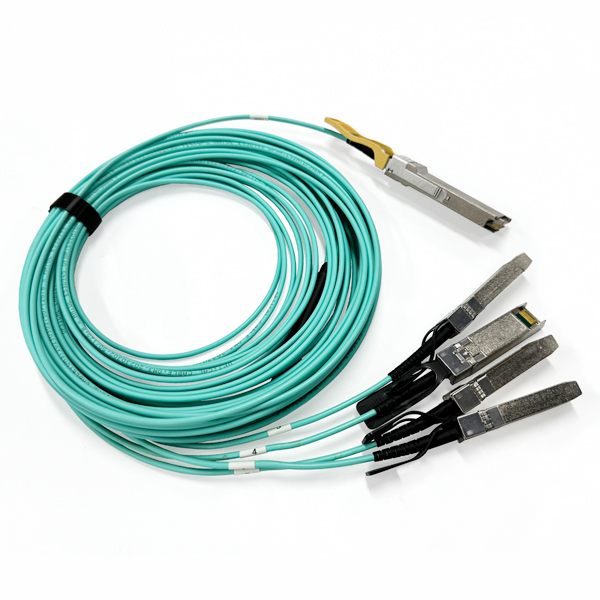One day there is customer sent FRQ:I need 100G mpo cable 75meter. But after talk with him, he don’t know what exactly connector he need. We always meet such problems, and even some sales not familar with the idea of what is 10G, what is 40G, what is 100G. And what products he need indeed.
Below article will mainly introduce four types of fiber optic cabling, as well as product selection under their cabling standards, and compare two 100G migration routes to help you understand the standards and find suitable fiber optic cables.
10 Gb Fiber Optic Cabling
The 10 Gigabit Ethernet technology defined by the IEEE802.3ae-2002 standard is now mature. A 10Gb network can be connected through copper or fiber optic cables.
The 1000BASE-T standard typically uses Cat5e cables as the transmission medium, while 10GbE bandwidth requires high-grade copper cables such as Cat6/Cat6a/Cat7 cables. For example, the 10GSFP+10GBASE-T electrical interface module uses copper twisted pair cables (Cat6a/Cat7), but the link length cannot exceed 30 meters.

SFP+direct connect cables (DAC) and active optical cables (AOC) are also considered economical solutions for 10G short-range applications. In addition to 10G copper cables, single-mode (OS2) and multi-mode optical fibers (OM3/OM4) are also used for different 10GbE IEEE standards.
For detailed information on 10G cabling options, please refer to the table below:
| Cabling standard | Medium | Distance |
| 10G-LX4 | 9um single mode fiber | 10km |
| 62.5um multimode fiber | 300m | |
| 50um multimode fiber | <30m | |
| 10G-SR | 62.5um multimode OM3 fiber | 300m |
| 50um multimode OM4 fiber | 400m | |
| 10G-LR | 9um single mode fiber | 10km |
| 10G-ER | 9um single mode fiber | 40km |
| 10G-ZR | 9um single mode fiber | 80km |
| 10G-T | Cat6, cat6a or cat 7 twisted pair cable | 30m |
| 10G-DAC | Copper RJ45 | 1-10m |
| 10G-AOC | Fiber | 1-20m |
25Gb Fiber Optic Cabling
Compared to 40GbE based on 10GbE, the 25Gb single channel rate clearly increases port density and cost requirements. The 25GbE network can support both copper and fiber optic cables.

SFP28-25G-SR and SFP28-25G-LR are two popular 25G optical modules available in the market. The former supports link lengths up to 100 meters, while the latter allows a maximum transmission distance of 10km. It should be noted that the maximum length of SFP28DAC cable is 5m (1m, 2m, 3m, 5m). 25G active optical cable (AOC) can stably reach 25m.
For detailed information on 25G cabling options, please refer to the table below:
| Cabling standard | Medium | Distance |
| 25G-SR | 50um multimode fiber | 70m |
| 25G-LR | 9um single mode fiber | 10km |
| 25G-AOC | 50um multimode fiber | 3,5,7,10,15,20,25m |
| 25G-DAC | Copper wire | 1,2,3,5m |
40Gb Fiber Optic Cabling
Similar to the case of 10G, because there is a significant advantage in plug-in density. 40GQSFP+optical module has become the actual standard in 40G networks.
For detailed information on 40G cabling options, please refer to the table below:
| Cabling standard | Medium | Distance |
| 40G-LX4 | Om3 multimode fiber | 150m |
| 9um single mode fiber | 2km | |
| 40G-SR24 | 62.5umOM3 multimode fiber MPO/MTP | 100m |
| 50umOM4 multimode fiber MPO/MTP | 150m | |
| 40G-CSR | 50um OM4 multimode fiber MPO/MTP | 400m |
| 40G-SR | 50um multimode fiber DLC | 150m |
| 40G-LR4 | 9um single mode fiber DLC | 10km |
| 40G-ER4 | 9um single mode fiber DLC | 40km |
100Gb Fiber Optic Cabling
The 100GQSFP28 optical module (transceivers) has also become the mainstream product to replace 100G modules such as CFP, CFP2, CFP4, etc. due to its significant advantage of high plug and play density.

For 100G rack to rack connections, QSFP28 to QSF28 direct copper (DAC) cables and active optical (AOC) cables, as well as QSFP28 to SFP28 branch cables, are cost-effective solutions.
For detailed information on 100G cabling options, please refer to the table below:
| Cabling standard | Medium | Distance |
| 100G-SR4 | 50umOM4 multimode fiber MPO/MTP | 100m |
| 100G-LR4 | 9um single mode fiber DLC | 10km |
| 100G-PSM4 | OM4 multimode fiber MPO/MTP | 500m |
| 100G-CWDM4 | 9um single mode fiber DLC | 2km |
| 100G-ER4 | 9um single mode fiber DLC | 40km |
Comparison of 2 Types of 100G migration paths
Path 1: 10G-40G-100G
In this path, the previously invested 10G resources will be utilized, and the QSFP40G module consists of 4 parallel 10G channels. For the 100GSR10 module, it supports a channel rate of 10 × 10G. So in the 100G migration, the single channel rate of 10G is used as the basis, but the migration path from 10G to 40G to 100G requires more fiber count.
Longer distance QSFP (such as QSFP+LR4 optical module) integrates 4 10G channels into one fiber optic link through wavelength division technology (WDM) for transmission. Meanwhile, this is also partly due to the high cost of QSFP optical modules, especially for 40G modules with longer transmission distances (such as QSFP+ER4).
Path 2: 25G-50G-100G
A single channel 25G rate is 2.5 times more efficient than 10G transmission, and in a 100G network, only 4 25G modules are needed to become a 4 × 25Gb/s mode. This will significantly save on fiber optic links, but this path will eliminate the existing 10G equipment in the system.
Finally, we can see that, the QSFP284 × 25Gb/s path is relatively more economical.
A single channel 4x25G module will be cheaper than a 10x10G module because the transceiver is simpler and the manufacturing cost will be lower.
The power consumption of 4-channel SFP28 is much lower than that of typical 10 channel SFP+, giving 25G an advantage in operating costs.
Upgrade the number of fiber optic cables from 10G to 100G to 10, but only 4 connections are needed from 25G to 100G, which can save link resources.







